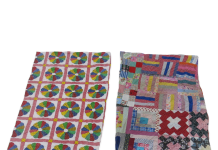If any aliens or technology ingenues were trying to understand what on earth a ‘smart home’ is yesterday, via Google’s latest own-brand hardware launch event, they’d have come away with a pretty confused and incoherent picture.
The company’s presenters attempted to sketch a vision of gadget-enabled domestic bliss but the effect was rather closer to described clutter-bordering-on-chaos, with existing connected devices being blamed (by Google) for causing homeowners’ device usability and control headaches — which thus necessitated another new type of ‘hub’ device which was now being unveiled, slated and priced to fix problems of the smart home’s own making.
Meet the ‘Made by Google’ Home Hub.
Buy into the smart home, the smart consumer might think, and you’re going to be stuck shelling out again and again — just to keep on top of managing an ever-expanding gaggle of high maintenance devices.
Which does sound quite a lot like throwing good money after bad. Unless you’re a true believer in the concept of gadget-enabled push-button convenience — and the perpetually dangled claim that smart home nirvana really is just around the corner. One additional device at a time. Er, and thanks to AI!
Yesterday, at Google’s event, there didn’t seem to be any danger of nirvana though.
Not unless paying $150 for a small screen lodged inside a speaker is your idea of heaven. (i.e. after you’ve shelled out for all the other connected devices that will form the spokes chained to this control screen.)
A small tablet that, let us be clear, is defined by its limitations: No standard web browser, no camera… No, it’s not supposed to be an entertainment device in its own right.
It’s literally just supposed to sit there and be a visual control panel — with the usual also-accessible-on-any-connected-device type of content like traffic, weather and recipes. So $150 for a remote control doesn’t sound quite so cheap now does it?
The hub doubling as a digital photo frame when not in active use — which Google made much of — isn’t some kind of ‘magic pixie’ sales dust either. Call it screensaver 2.0.
A fridge also does much the same with a few magnets and bits of paper. Just add your own imagination.
During the presentation, Google made a point of stressing that the ‘evolving’ smart home it was showing wasn’t just about iterating on the hardware front — claiming its Google’s AI software is hard at work in the background, hand-in-glove with all these devices, to really ‘drive the vision forward’.
But if the best example it can find to talk up is AI auto-picking which photos to display on a digital photo frame — at the same time as asking consumers to shell out $150 for a discrete control hub to manually manage all this IoT — that seems, well, underwhelming to say the least. If not downright contradictory.
Google also made a point of referencing concerns it said it’s heard from a large majority of users that they’re feeling overwhelmed by too much technology, saying: “We want to make sure you’re in control of your digital well-being.”
Yet it said this at an event where it literally unboxed yet another clutch of connected, demanding, function-duplicating devices — that are also still, let’s be clear, just as hungry for your data — including the aforementioned tablet-faced speaker (which Google somehow tried to claim would help people “disconnect” from all their smart home tech — so, basically, ‘buy this device so you can use devices less’… ); a ChromeOS tablet that transforms into a laptop via a snap-on keyboard; and 2x versions of its new high end smartphone, the Pixel 3.
There was even a wireless charging Pixel Stand that props the phone up in a hub-style control position. (Oh and Google didn’t even have time to mention it during the cluttered presentation but there’s this Disney co-branded Mickey Mouse-eared speaker for kids, presumably).
What’s the average consumer supposed to make of all this incestuously overlapping, wallet-badgering hardware?!
Smartphones at least have clarity of purpose — by being efficiently multi-purposed.
Increasingly powerful all-in-ones that let you do more with less and don’t even require you to buy a new one every year vs the smart home’s increasingly high maintenance and expensive (in money and attention terms) sprawl, duplication and clutter. And that’s without even considering the security risks and privacy nightmare.
The two technology concepts really couldn’t be further apart.
If you value both your time and your money the smartphone is the one — the only one — to buy into.
Whereas the smart home clearly needs A LOT of finessing — if it’s to ever live up to the hyped claims of ‘seamless convenience’.
Or, well, a total rebranding.
The ‘creatively chaotic & experimental gadget lovers’ home would be a more honest and realistic sell for now — and the foreseeable future.
Instead Google made a pitch for what it dubbed the “thoughtful home”. Even as it pushed a button to pull up a motorised pedestal on which stood clustered another bunch of charge-requiring electronics that no one really needs — in the hopes that consumers will nonetheless spend their time and money assimilating redundant devices into busy domestic routines. Or else find storage space in already overflowing drawers.
The various iterations of ‘smart’ in-home devices in the market illustrate exactly how experimental the entire concept remains.
Just this week, Facebook waded in with a swivelling tablet stuck on a smart speaker topped with a camera which, frankly speaking, looks like something you’d find in a prison warden’s office.
Google, meanwhile, has housed speakers in all sorts of physical forms, quite a few of which resemble restroom scent dispensers — what could it be trying to distract people from noticing?
And Amazon now has so many Echo devices it’s almost impossible to keep up. It’s as if the ecommerce giant is just dropping stones down a well to see if it can make a splash.
During the smart home bits of Google’s own-brand hardware pitch, the company’s parade of presenters often sounded like they were going through robotic motions, failing to muster anything more than baseline enthusiasm.
And failing to dispel a strengthening sense that the smart home is almost pure marketing, and that sticking update-requiring, wired in and/or wireless devices with variously overlapping purposes all over the domestic place is the very last way to help technology-saturated consumers achieve anything close to ‘disconnected well-being’.
Incremental convenience might be possible, perhaps — depending on which and how few smart home devices you buy; for what specific purpose/s; and then likely only sporadically, until the next problematic update topples the careful interplay of kit and utility. But the idea that the smart home equals thoughtful domestic bliss for families seems farcical.
All this updatable hardware inevitably injects new responsibilities and complexities into home life, with the conjoined power to shift family dynamics and relationships — based on things like who has access to and control over devices (and any content generated); whose jobs it is to fix things and any problems caused when stuff inevitably goes wrong (e.g. a device breakdown OR an AI-generated snafu like the ‘wrong’ photo being auto-displayed in a communal area); and who will step up to own and resolve any disputes that arise as a result of all the Internet connected bits being increasingly intertwined in people’s lives, willingly or otherwise.
Hey Google, is there an AI to manage all that yet?





























![[Update: Fixed] Google Nest outage takes down Thermostat, Cam live video, and apps](http://cdn.smarthometimes.com/wp-content/uploads/2020/04/nest_thermostat_1-218x150.jpg)









